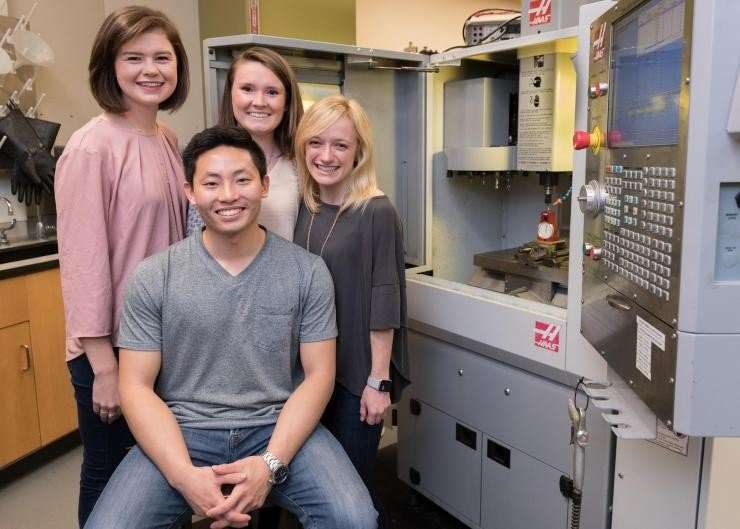A safer way to handle surgical scalpel blades

When tasked with redesigning a medical device, four biomedical engineering majors focused their attention on scalpels. Specifically, the blade packaging for the tool.
Their blade packaging was designed to protect health care workers from accidental injuries that can occur when handling exposed scalpel blades.
Now their invention, Scal-Pal, is one of six competing for Georgia Tech's InVenture Prize, an annual innovation competition. The winner will be chosen March 14.
Currently doctors and nurses must handle the blade with their fingers to remove it or attach a new one to the scalpel handle. The foil packaging around a fresh blade is opened like an adhesive bandage. One person opens the packaging, while a second person grabs the exposed blade with needle holders and inserts it into the scalpel handle.
"It's easy for accidents to happen because the packaging forces the blade to be exposed," said Alpharetta native Bailey Klee. "I was job shadowing in an operating room and I saw a nurse take off the blade and cut herself. We found a way to prevent that from happening again."
Scal-Pal works much the same way as switching out razor blades. The blade is stored inside a single-use box made from pre-recycled polyethylene, akin to the plastic used in milk jugs. The scalpel handle is inserted into the box and the blade is attached. To remove the used blade, the scalpel is inserted back into the box and the blade is released from the handle and trapped inside. The entire box is then thrown away.
The team 3-D printed the pink and black box in the BME Machine Shop.
"Our design works because the blade is never exposed," said Sydney Platt, who is from Lake Jackson, Texas. "No one has to touch it directly."
"There is a market and a need for what we developed," added Nicholas Quan from Richmond Hill, Ga.
Hospitals spend more than $116 million a year on scalpel related injuries, reported Rachel Mann, a native of Homer Glen, Ill. Those same hospitals use more than 1 million scalpel blades a day.
"We need to gain exposure with medical device manufacturers," Mann said. "We're hopeful the InVenture Prize will help make that happen."





















